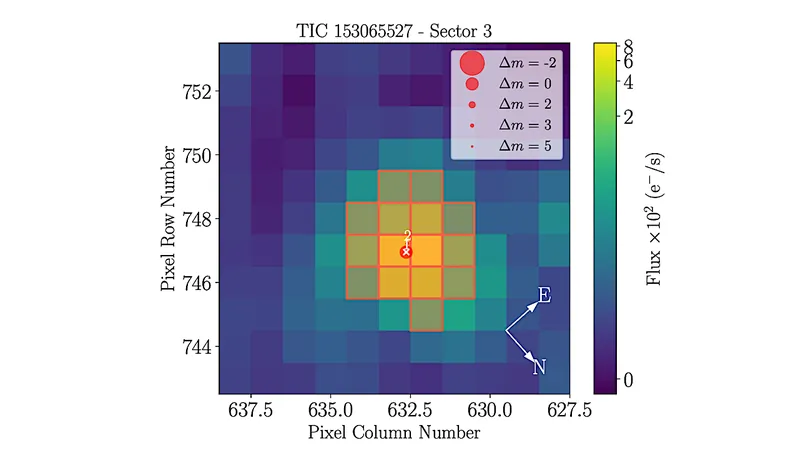
Unlocking the Mystery of Exoplanets: New Insights from THIRSTEE Program on TOI-406
2024-09-19
Unlocking the Mystery of Exoplanets: New Insights from THIRSTEE Program on TOI-406
The enigmatic sub-Neptune exoplanet population continues to baffle scientists as they explore the question: Are these smaller planets simply volatile-rich cores devoid of atmospheres, or do they possess rocky cores enveloped in hydrogen and helium? In order to illuminate the composition of these intriguing celestial bodies, a significant leap in observational data is essential.
Enter the THIRSTEE program—an ambitious initiative designed to unravel the mysteries surrounding sub-Neptunes by enhancing the quantity and accuracy of bulk density measurements while also probing their atmospheric characteristics. THIRSTEE aims to provide a comprehensive demographic analysis of these planets, focusing on their fundamental properties across various stellar types.
The program recently unveiled its initial findings regarding a two-planet system orbiting the M dwarf star TOI-406. By examining photometric data from TESS alongside ground-based observations, including the ESPRESSO and NIRPS/HARPS spectrometric data, researchers derived intricate details about the two exoplanets’ masses and radii. Specifically, the first planet, designated as TOI-406b, presents a radius of 1.32 ± 0.12 Earth radii and a mass of 2.08 +0.23 -0.22 Earth masses, while its companion, TOI-406c, boasts a radius of 2.08 +0.16 -0.15 Earth radii and a mass of 6.57 +1.00 -0.90 Earth masses. The orbital periods of these planets are notable as well: 3.3 days for TOI-406b and 13.2 days for TOI-406c.
Initial results suggest that TOI-406b bears resemblance to Earth's composition, while TOI-406c showcases compatibility with numerous internal structure models, including those suggesting a volatile-rich profile lacking significant hydrogen/helium atmospheres. Strikingly, the findings identify these two planets as residing in separate regions of the mass-density spectrum, endorsing the hypothesis of a density gap among smaller exoplanets orbiting M dwarfs.
TOI-406c stands out among its peers with an equilibrium temperature of just 368 K, cementing its status as an exciting prospect for atmospheric analysis using the James Webb Space Telescope (JWST), particularly given the temperature regime in which it exists.
Moreover, the THIRSTEE program will not only enrich our understanding of mass and radius relationships among exoplanets but will also cross-reference data from existing exoplanet archives, leading to grounded conclusions about the composition and atmospheric traits of these distant worlds.
As the THIRSTEE team continues their groundbreaking work, they’re poised to provide vital clues to the universe's secrets, transforming our understanding of exoplanet formation and evolution. Will these new insights unlock the door to even greater discoveries in the vast cosmos? Only time will tell! Stay tuned for more revelations from the forefront of exoplanet research!



 Brasil (PT)
Brasil (PT)
 Canada (EN)
Canada (EN)
 Chile (ES)
Chile (ES)
 España (ES)
España (ES)
 France (FR)
France (FR)
 Hong Kong (EN)
Hong Kong (EN)
 Italia (IT)
Italia (IT)
 日本 (JA)
日本 (JA)
 Magyarország (HU)
Magyarország (HU)
 Norge (NO)
Norge (NO)
 Polska (PL)
Polska (PL)
 Schweiz (DE)
Schweiz (DE)
 Singapore (EN)
Singapore (EN)
 Sverige (SV)
Sverige (SV)
 Suomi (FI)
Suomi (FI)
 Türkiye (TR)
Türkiye (TR)